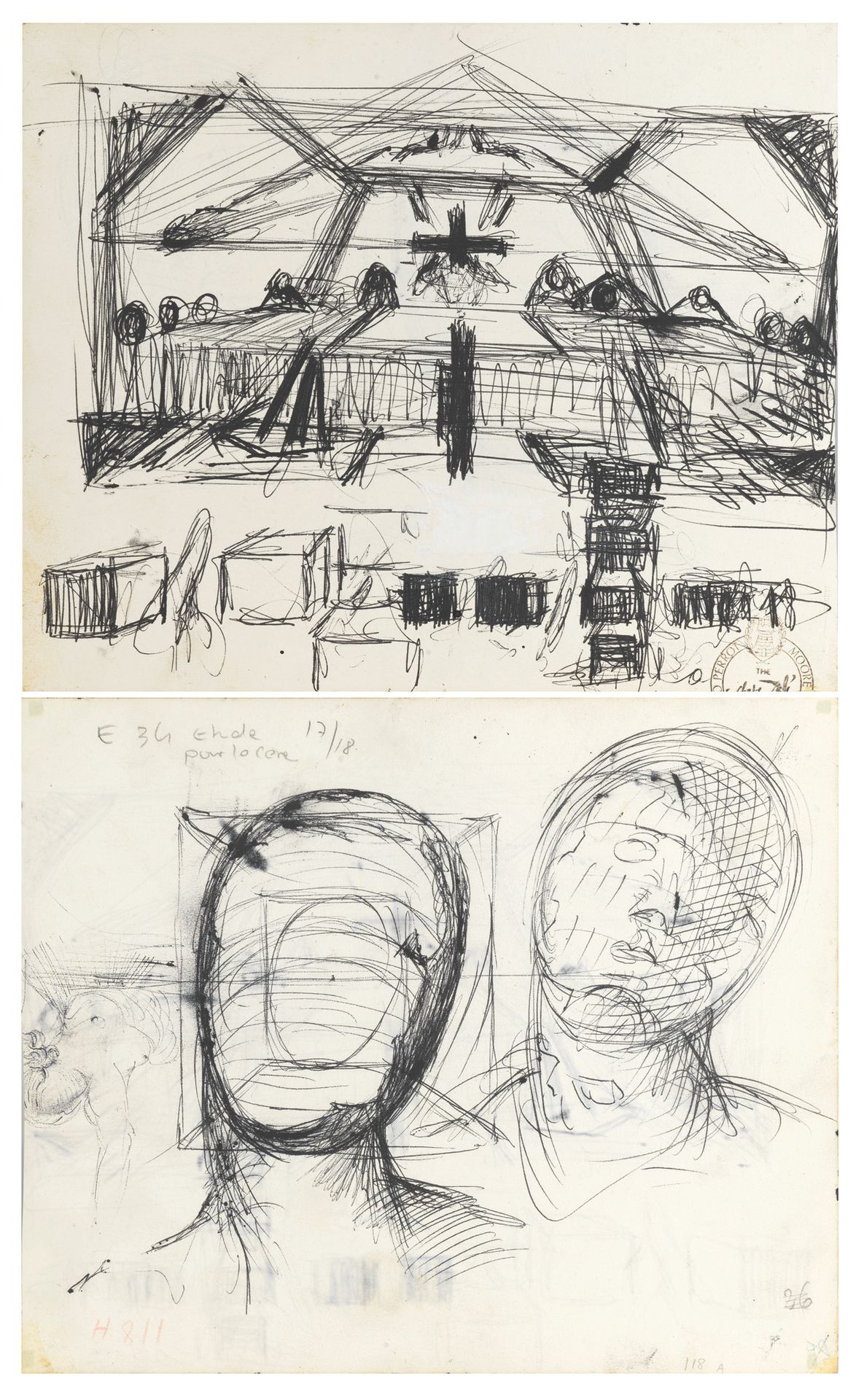Description
Salvador DALI (1904-1989)
Study for "The Last Supper," Christ and the Apostles, and Head Sketch, 1955 Double-sided ballpoint pen drawing on paper. Stamp of the Perrot-Moore collection in the lower right corner. Ink on paper, recto-verso. Stamp of the Perrot-Moore collection lower right. H_20 cm W_24,2 cm Provenance : - Former Perrot-Moore collection - Private collection, Paris Bibliography : Dali in Wien, catalog of the exhibition at the Plais Auersperg, Vienna, March-April 1982 reproduced under the n°118. A certificate of Robert and Nicolas Descharnes dated June 27, 2003 will be given to the purchaser "Salvador's Last Supper differs in many ways from that of Leonardo da Vinci. Certainly the painting is centered on Jesus, just like Leonardo's painting, but we can also see that he insists a little on the number of disciples. This number has remained at twelve, but the fact is that there are many details of the work that repeat this number. The room where the scene takes place has, for example, twelve sides, a dodecahedron. Obviously, since the apostles are twelve. The next point that makes a difference between the two works is that Leonardo da Vinci reproduces this last meal of Jesus as described in the Bible. But with Salvador Dali's version of the Last Supper the extension of the Last Supper in the background reflects the dawn. We will assume that he wanted to give his painting the image of the sacrifice that the son of God made for us. He also stayed in a familiar setting. It is not a blue sky but a background over the sea that we are used to seeing on these paintings."
You may also like
